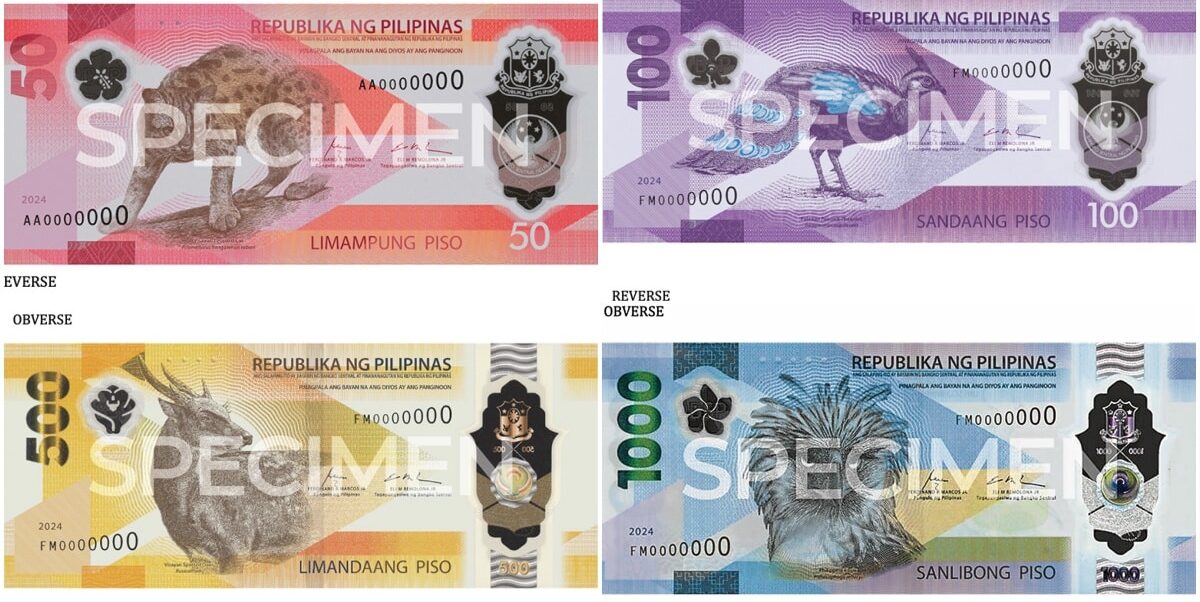BSP to release less than 100M pieces each of new notes

NEWMONEY The Bangko Sentral ng Pilipinas (BSP) has launched a newgeneration of polymer banknotes. Production will be ramped up in 2025. —PHOTOS FROMBSP
The Bangko Sentral ng Pilipinas (BSP) will initially circulate less than 100 million pieces of each denomination of the new polymer banknote series to help meet the currency demand of Filipinos during the holiday season.
“Since this is an initial launch of the polymer banknotes series, we will have limited quantities in about 70 to 90 million per denomination. For the P1,000, it has been there,” BSP Assistant Governor Mary Anne Lim said.
“In the coming years, especially in 2025, we will have more quantities of the P500, P100 and P50 and we will issue them also next year,” Lim added.
Last week, the BSP unveiled polymer bills in the country, more than two years after circulating the first series of P1,000 bills produced using plastic materials.
Data showed there are 661 million pieces of the polymer P1,000 currently in circulation.
Article continues after this advertisementNew generation
The new generation of bills introduces new P500, P100 and P50 denominations. Similar to the previously issued 1,000 piso—whose design showcases the Philippine eagle and sampaguita flower—the other denominations feature native and endangered Philippine species.
Article continues after this advertisementThat was a departure from the previous design found in paper banknotes featuring national heroes, triggering criticisms from various sectors. The BSP said the plastic-based and paper banknotes will co-circulate to showcase both heroes and local biodiversity.
The polymer bills will not include the P200 denomination, which the BSP has stopped producing since 2021 due to “low usage.” But the denomination will remain a legal tender until they become unfit for recirculation.
Australia
Similar to the P1,000 bills, the polymer version of other denominations will be printed in Australia. The production is more expensive compared to printing paper bills, Lim said, but she explained that shifting to plastic-based banknotes would mean cheaper replacement costs in the long-run.
“Right now, we are starting to build our capacity [to produce polymer bills],” she said.
The shift to plastic-based raw materials was part of the central bank’s attempt to introduce more durable banknotes in response to the rapid deterioration of abaca-based peso bills, especially smaller denominations often used in wet markets.
The polymer bills, the BSP said, can last at least two to five times longer than paper banknotes, offsetting high production costs.
Central banks around the world change the designs and materials of their banknotes every 10 years, on average, to prevent counterfeiting. The BSP said countries like Canada, Australia, New Zealand, Malaysia, Mexico, Fiji and Vietnam had experienced a great reduction in counterfeiting cases after shifting to polymer banknotes. INQ